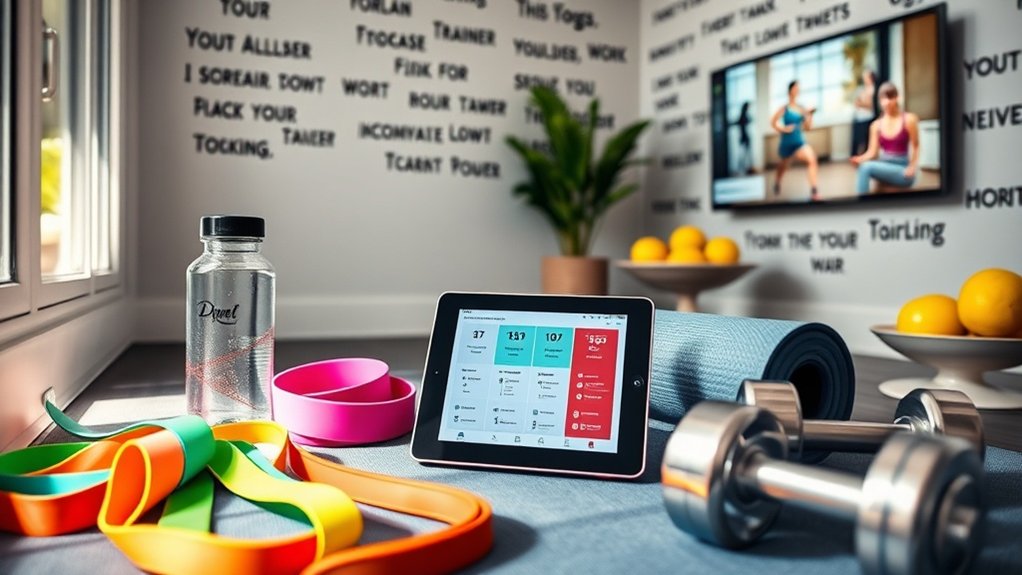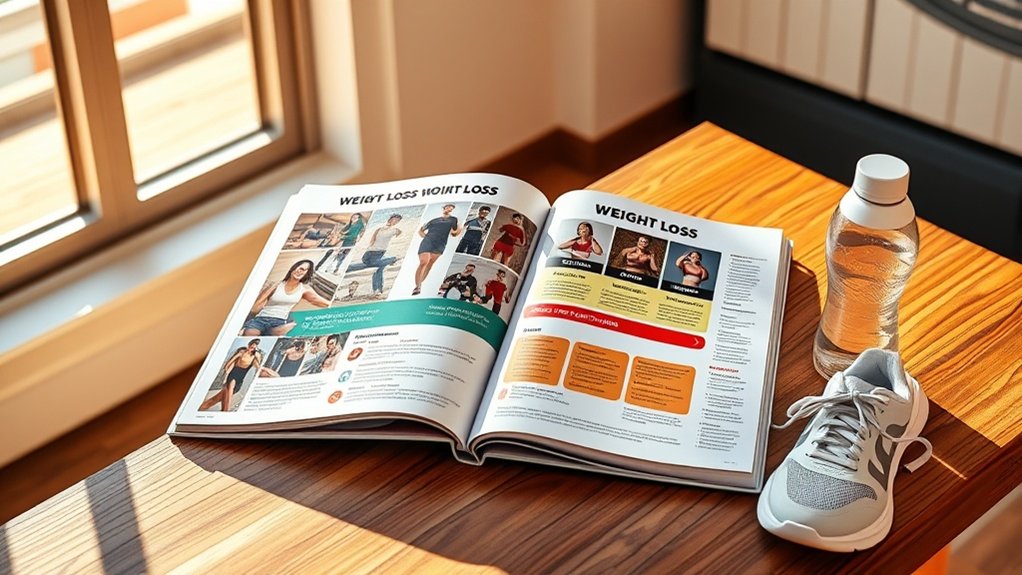You’ll build a custom CrossFit-style plan by programming three core domains weekly: weightlifting (squats, deadlifts, Olympic lifts), gymnastics (pull-ups, handstands), and metabolic conditioning (AMRAPs, EMOMs). Structure your week with high-intensity sessions followed by strategic rest days, incorporating benchmark WODs like “Fran” or “Murph” to track progress. Scale movements to match your fitness level—swap barbell squats for air squats when needed—while maintaining proper form. Progressive overload through increased weight, reps, or reduced rest intervals drives continuous adaptation. Master these foundational programming principles to reveal sustainable performance gains.
Understanding Functional Movement Patterns in CrossFit Training

Because CrossFit builds its methodology around movements you’ll use outside the gym, understanding functional patterns forms the foundation of effective training.
You’ll engage multiple muscle groups through compound movements like squats, deadlifts, and Olympic lifts, which directly translate to real-world physical demands. These strength training exercises don’t isolate muscles—they coordinate them, improving your balance and addressing imbalances simultaneously.
The high intensity approach boosts your metabolic efficiency while building both strength and endurance.
Through varied programming, you’ll develop cardiovascular fitness alongside muscular power, creating thorough functional fitness gains that improve overall health.
Scaling options guarantee you’ll progress safely regardless of your starting point.
Whether you’re modifying load, range of motion, or complexity, these adjustments maintain movement integrity while accommodating your current capabilities.
Building Your Weekly WOD Programming Structure
Your weekly training split requires strategic placement of strength, conditioning, and skill work across 4-5 sessions to optimize adaptation while preventing overtraining.
You’ll need to position rest days deliberately—typically after high-intensity sessions or before maximum strength efforts—to allow for adequate nervous system recovery.
Progressive overload in your WOD programming means systematically increasing volume, intensity, or complexity through tracked metrics like added weight, reduced time caps, or advanced movement variations that challenge your current capacity.
Weekly Training Split Design
When building your weekly WOD programming structure, you’ll need to strategically distribute strength work, metabolic conditioning, and skill development across five to six training days while designating one to two days for active recovery.
Your weekly training split should alternate between strength training sessions focused on compound lifts, conditioning workouts emphasizing varied functional movements, and high-intensity interval training to maximize cardiovascular adaptations.
Dedicate specific days to Olympic lifting technique, gymnastics progressions, and mobility work to address movement quality. Each 15-20 minute session targets multiple muscle groups simultaneously, making sure time-efficient programming.
Schedule heavy strength days before conditioning workouts to maintain proper form under fatigue. Integrate active recovery sessions featuring light movement and stretching between intense training blocks, preventing overtraining while sustaining consistent progress toward your fitness objectives.
Rest Day Placement Strategy
Strategic rest day placement directly impacts your training adaptations and long-term performance sustainability. Your training program should integrate rest days on Thursday and Sunday, following high-intensity training sessions that demand significant recovery. This structure prevents accumulated fatigue levels while supporting performance improvement through proper muscle regeneration.
| Rest Day Type | Purpose |
|---|---|
| Complete Rest | Maximum recovery post-high-intensity training |
| Active Recovery | Improved blood flow, light movement work |
Monitor your individual response to training volume. Individualized programming requires adjusting rest day placement based on your fatigue levels and recovery capacity. Active recovery sessions—mobility work, light rowing, or walking—can replace complete rest when appropriate. This community-oriented approach guarantees you’re adequately prepared for demanding workouts while maintaining consistent progress throughout your training cycle.
Progressive Overload Implementation
Progressive overload forms the foundation of sustainable strength development in CrossFit programming, requiring systematic increases in training stress across your weekly WOD structure.
You’ll implement this by strategically manipulating load, volume, and intensity variables that match your current fitness level. Track total reps, weights lifted, and workout times to guarantee you’re progressing without compromising proper technique.
Effective progressive overload strategies include:
- Adding 5-10% more weight to strength movements weekly while maintaining form integrity
- Increasing total reps in benchmark workouts that focus on bodyweight capacity and muscular endurance
- Reducing rest intervals in conditioning pieces to boost training intensity progressively
Your community’s coaches can help validate you’re advancing appropriately.
Benchmark Workouts: The Girls and Hero WODs Explained
Benchmark workouts serve as standardized performance markers in your CrossFit programming, with two primary categories defining the landscape: Girl WODs and Hero WODs.
Girl WODs—named with women’s names like “Fran,” “Cindy,” and “Grace”—provide consistent testing protocols that measure your strength, conditioning, and technical proficiency across varied time domains and movement patterns.
Hero WODs carry a deeper purpose, honoring fallen military service members, first responders, and community heroes through demanding workouts that challenge you physically while connecting your training to meaningful sacrifice.
What Are Girl WODs
When you step into a CrossFit gym, you’ll quickly hear athletes talking about “Fran” or “Helen” with a mix of respect and dread.
Girl WODs are standardized benchmark workouts that test your fitness across multiple domains. Each workout combines functional movements designed to challenge your strength, endurance, and skill simultaneously through high-intensity efforts that promote metabolic conditioning.
These benchmarks serve essential purposes in the CrossFit community:
- Progress Tracking: You’ll repeat the same workout months apart to measure tangible improvements in your performance.
- Universal Standards: Athletes worldwide complete identical workouts, creating shared experiences and comparable results.
- Comprehensive Testing: Each Girl WOD targets different energy systems and movement patterns, revealing your strengths and weaknesses.
Understanding these benchmark workouts helps you guide your CrossFit journey with clear, measurable goals.
Hero WODs Honor Fallen
While Girl WODs test your fitness limits, Hero WODs carry a deeper weight—they honor the ultimate sacrifice made by fallen military members, police officers, firefighters, and other service members who died in the line of duty.
Each Hero WOD combines weightlifting, bodyweight exercises, and endurance components into high-intensity functional movements that reflect the hero being commemorated. You’ll face substantial volume and challenging rep schemes designed to push your physical and mental boundaries.
These workouts create meaningful training experiences that connect your community to stories of service and sacrifice. When you’re grinding through rounds of movements, you’re not just improving performance—you’re participating in a collective act of remembrance.
Hero WODs transform benchmark testing into purposeful tribute, uniting athletes through shared effort and honor.
Integrating Olympic Lifting and Gymnastics Skills

Because Olympic lifting and gymnastics skills form the technical foundation of CrossFit’s most demanding movements, you’ll need to approach their integration with deliberate programming rather than random inclusion.
These movement patterns require dedicated practice sessions before combining them in high-intensity CrossFit workouts.
Strategic integration improves both strength and body control:
- Schedule skill-specific sessions before metabolic conditioning to prioritize technique when you’re fresh, reducing injury prevention concerns while building proper movement patterns.
- Progress gymnastics skills systematically through scaled variations, developing the strength-to-weight ratio necessary for advanced body control movements.
- Pair Olympic lifting with complementary exercises that reinforce functional fitness without compromising form under fatigue.
This structured approach transforms technical weaknesses into competitive advantages, helping you achieve measurable progress in benchmark workouts while maintaining movement quality.
Scaling Strategies and Movement Modifications for All Levels
Effective scaling transforms CrossFit from an elite-only training system into an adaptable methodology that serves everyone from complete beginners to competitive athletes. You’ll find scaling strategies essential for matching workouts to your current fitness levels while maintaining proper form that prevents injuries. Movement modifications let you substitute challenging exercises with bodyweight alternatives—replacing barbell squats with air squats, for example.
| Original Movement | Scaled Option |
|---|---|
| Pull-ups | Ring rows or banded pull-ups |
| Box jumps | Step-ups or lower box height |
| Handstand push-ups | Pike push-ups or wall walks |
Metabolic Conditioning Protocols for Maximum Performance

Once you’ve mastered proper scaling and movement modifications, you’ll need programming that challenges your cardiovascular system and builds work capacity across varied time domains.
Metabolic conditioning forms the backbone of effective CrossFit programming, strategically combining functional movements to maximize workout intensity and calorie burning while developing athletic capacity.
Your training programs should incorporate these proven metcon formats:
- AMRAP protocols (8-15 minutes) that push sustainable pace development while tracking performance benchmarks
- EMOM structures that enforce work-rest ratios and maintain technical standards under fatigue
- Interval designs pairing complementary movements (gymnastics, weightlifting, monostructural cardio) for extensive conditioning
Smart metabolic conditioning targets multiple energy systems simultaneously, creating adaptations that translate directly to real-world performance demands.
You’ll build the engine that powers everything else in your fitness journey.
Competition Preparation and Injury Prevention Strategies
As your training intensity climbs toward competition readiness, your body’s resilience becomes just as critical as your PRs. Effective competition preparation demands strategic injury prevention through progressive overload, assuring your functional movements improve without compromising structural integrity.
| Training Component | Implementation Strategy |
|---|---|
| Warm-up Routine | Dynamic stretches and mobility work before each session |
| Skill-Specific Training | Dedicated practice for Olympic lifts and gymnastics movements |
| Scaling Options | Modify movements when fatigue affects form |
| Recovery | Two mandatory rest days weekly for muscle recuperation |
Your warm-up routine primes neural pathways while reducing injury risk. Incorporate skill-specific training sessions to refine technique under controlled conditions. When intensity peaks, scaling options maintain movement quality over ego-driven loads. Schedule recovery strategically—your tissues rebuild stronger during rest, not training.
Frequently Asked Questions
What Equipment Do I Need to Start a Crossfit-Style Workout at Home?
You’ll need resistance bands, a jump rope, and foam rollers initially. Add dumbbell variations, kettlebell workouts, and medicine balls as you progress. These enable bodyweight exercises and plyometric movements, building your functional fitness foundation within our community-focused training approach.
How Many Rest Days Should I Take per Week?
You’ll need 2-3 rest days weekly for ideal muscle repair and performance improvement. Rest day importance can’t be overstated—proper recovery techniques prevent overtraining risks. Your individual needs dictate workout frequency, so listen to your body’s scheduling tips.
Can I Do Crossfit if I Have No Prior Fitness Experience?
Yes, you’ll succeed with a beginner mindset! Start with basic movements using modifications available. Your community support system helps overcome fear while following safety tips. Track progress, set achievable goals, and master proper technique before advancing intensity.
What Should I Eat Before and After Crossfit Workouts?
You’ll fuel performance, build strength, and recover faster with proper meal timing. Prioritize pre-workout snacks with carbohydrate intake, then post-workout meals featuring protein sources and healthy fats. Macronutrient balance plus hydration importance can’t be overlooked for ideal results.
How Long Does It Take to See Results From Crossfit Training?
You’ll notice performance improvement and strength gains within 2-3 weeks with workout consistency. Visible changes in body composition typically appear after 6-8 weeks, though your results timeline varies based on individual factors and nutrition impact on recovery.



